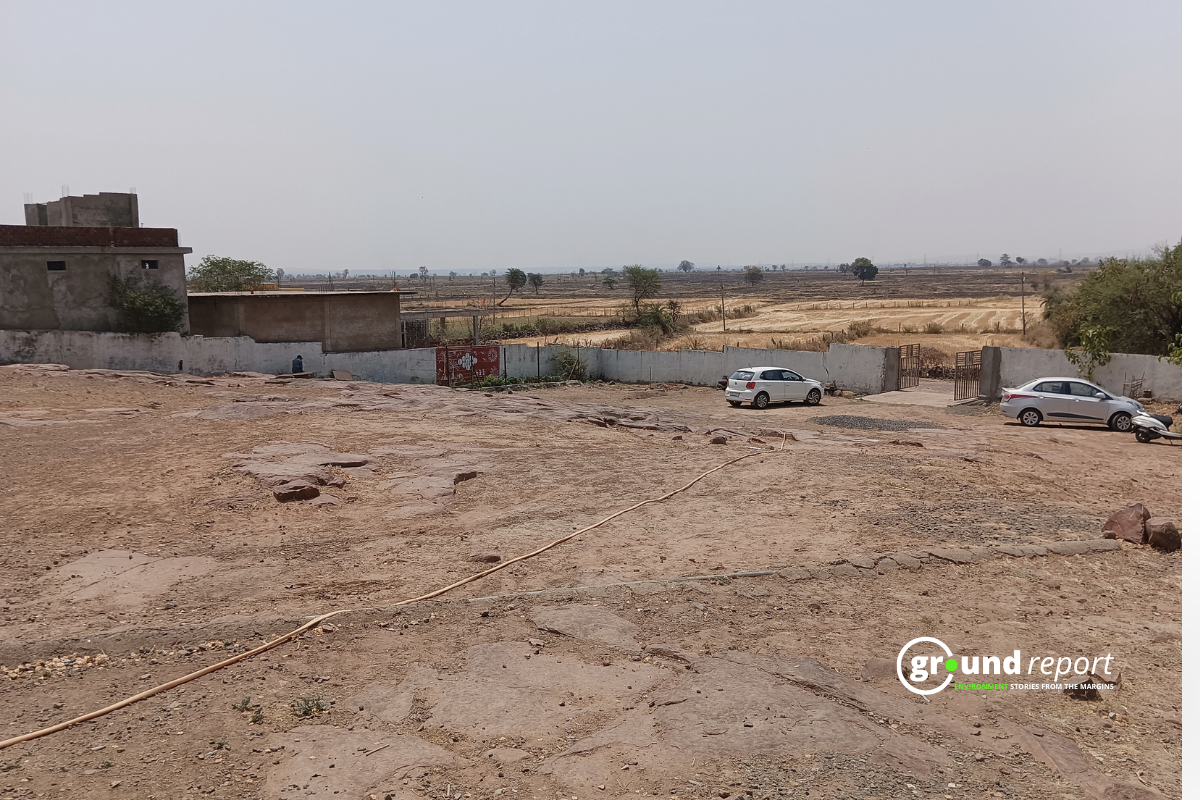Asia retained its title as the world’s most disaster-prone region in 2023, facing a barrage of weather, climate, and water-related hazards. Floods and storms inflicted the highest number of casualties and economic losses, while the impact of heatwaves intensified, according to the latest report from the World Meteorological Organization (WMO).
The “State of the Climate in Asia 2023” report underscored the alarming acceleration of key climate change indicators, including rising surface temperatures, glacier retreats, and sea level rise. These trends spell significant implications for societies, economies, and ecosystems across the region.
Notably, sea-surface temperatures in the northwest Pacific Ocean hit record highs in 2023, with even the Arctic Ocean experiencing a marine heatwave.
Asia’s warming trend outpaces the global average, with temperatures rising nearly twice as fast as the 1961–1990 period, underscoring the urgent need for concerted climate action in the region.
Asia: Disaster-prone, Climate accelerates
“The report’s conclusions are sobering. Many countries in the region experienced their hottest year on record in 2023, along with a barrage of extreme conditions, from droughts and heatwaves to floods and storms. Climate change exacerbated the frequency and severity of such events, profoundly impacting societies, economies, and, most importantly, human lives and the environment that we live in,” said WMO Secretary-General Celeste Saulo.
In 2023, a total of 79 disasters associated with hydro-meteorological hazard events were reported in Asia according to the Emergency Events Database. Of these, over 80% were related to flood and storm events, with more than 2,000 fatalities and nine million people directly affected. Despite the growing health risks posed by extreme heat, heat-related mortality is frequently not reported.
“Yet again, in 2023, vulnerable countries were disproportionately impacted. For example, tropical cyclone Mocha, the strongest cyclone in the Bay of Bengal in the last decade, hit Bangladesh and Myanmar. Early warning and better preparedness saved thousands of lives,” said Armida Salsiah Alisjahbana, Executive Secretary of the Economic and Social Commission for Asia and the Pacific (ESCAP), which partnered in producing the report.

“In this context, the State of the Climate in Asia 2023 report is an effort to bridge gaps between climate science and disaster risk through evidence-based policy proposals. ESCAP and WMO, working in partnership, will continue to invest in raising climate ambition and accelerating the implementation of sound policy, including bringing an early warning to all in the region so that no one is left behind as our climate change crisis continues to evolve,” she said.
Asia, with approximately 80% of WMO Members in the region offering climate services to support disaster risk reduction activities. However, the report highlights a concerning gap, as less than 50% of Members provide climate projections and tailored products necessary for informed risk management, adaptation to, and mitigation of climate change impacts.
Released during the 80th session of the Commission in Bangkok, Thailand, the report is part of a series of WMO regional State of the Climate reports. It draws on contributions from National Meteorological and Hydrological Services, United Nations partners, and a network of climate experts. The report underscores WMO’s commitment to prioritizing regional initiatives and providing essential information to support decision-making processes.
Temperature & precipitation patterns in Asia
In 2023, Asia experienced the second-highest annual mean near-surface temperature on record, with temperatures averaging 0.91°C above the 1991–2020 average and 1.87°C above the 1961–1990 average.
Particularly high temperatures were observed from western Siberia to central Asia and from eastern China to Japan. Both Japan and Kazakhstan reported record-warm years.
Precipitation patterns varied across the region. Large parts of the Turan Lowland (including Turkmenistan, Uzbekistan, and Kazakhstan), the Hindu Kush (Afghanistan and Pakistan), the Himalayas, and areas around the Ganges and lower course of the Brahmaputra Rivers (India and Bangladesh) experienced below-normal rainfall.
Similar conditions were observed in the Arakan Mountains (Myanmar) and the lower course of the Mekong River. Southwest China faced drought conditions, with below-normal precipitation levels persisting throughout 2023, and the rains associated with the Indian Summer Monsoon were below average.
Cryosphere changes in high-mountain Asia
High-Mountain Asia centred on the Tibetan Plateau, holds a significant amount of ice, with glaciers covering around 100,000 square kilometres. However, these glaciers have been shrinking over the past few decades, and the rate of retreat is increasing.
Of the 22 observed glaciers in the region, 20 showed continued mass loss. Unusually high temperatures and dry conditions in the East Himalayas and most of the Tien Shan Mountains worsened the situation. For instance, Urumqi Glacier No. 1 in Eastern Tien Shan experienced its second-highest negative mass balance since recording began in 1959.
Permafrost, which refers to soil remaining frozen for two or more years, is common in high-latitude and high-altitude areas. Monitoring by the Russian Federal Service for Hydrometeorology and Environmental Monitoring shows that permafrost thawing is occurring rapidly in the European north, the Polar Urals, and western regions of Western Siberia. This thawing is attributed to rising air temperatures in the Arctic.
Snow cover extent over Asia in 2023 was slightly below the average recorded between 1998 and 2020.

Sea surface temperatures and ocean heat
Sea surface temperatures in key regions like the Kuroshio current system, Arabian Sea, and Barents Sea are rising more than three times faster than the global average. Notably, the North-west Pacific Ocean experienced its warmest sea surface temperature anomalies on record in 2023.
The Barents Sea stands out as a climate change hotspot due to significant ocean surface warming, impacting sea ice cover. This warming creates a feedback loop where reduced sea ice leads to further ocean warming, as darker sea surfaces absorb more solar energy.
Upper-ocean warming (0 m–700 m) is exceptionally strong in the North-Western Arabian Sea, Philippine Sea, and seas east of Japan, exceeding three times the global average.
Marine heatwaves, characterized by prolonged extreme heat in the ocean, were observed across extensive areas of the Arctic Ocean, Eastern Arabian Sea, and Northern Pacific, lasting from three to five months.

Extreme weather events grip Asia
In 2023, Asia bore the brunt of extreme weather, with over 80% of reported hydrometeorological hazards being floods and storms, according to EM-DAT data. Floods, in particular, caused the most fatalities, especially in countries like India, Yemen, and Pakistan.
Though the total number of named tropical cyclones in the western North Pacific Ocean and South China Sea was below average, their impacts were significant. Record-breaking rainfall hit countries like China, Japan, the Philippines, and the Republic of Korea.
One notable event was Extremely Severe Cyclonic Storm Mocha, which struck Myanmar’s Rakhine Coast in May, claiming 156 lives and causing widespread destruction.
Throughout June, July, and August, numerous floods and storms led to over 600 reported deaths across India, Pakistan, and Nepal. In September, Hong Kong witnessed its highest hourly rainfall total on record, while Vietnam saw record-breaking daily rainfall in October.
Saudi Arabia, the United Arab Emirates, and Yemen experienced heavy rainfall and subsequent flooding. In Russia, catastrophic flooding affected about 40,000 hectares of rural land, marking one of the region’s largest disasters in decades.
Many parts of Asia experienced extreme heat events in 2023. Japan experienced its hottest summer on record. China experienced 14 high-temperature events in summer, with about 70% of national meteorological stations exceeding 40℃ and 16 stations breaking their temperature records.
In India, severe heatwaves in April and June resulted in about 110 reported fatalities due to heatstroke. A major and prolonged heatwave affected much of South-East Asia in April and May, extending as far west as Bangladesh and Eastern India, and north to southern China, with record-breaking temperatures.

Challenges and opportunities
Data from the WMO climate services checklist reveals that 82% of Member countries in the region offer data services to aid disaster risk reduction efforts.

However, less than half of the National Meteorological and Hydrological Services (NMHSs) provide customized products for the disaster risk reduction community.
This underscores the pressing need to enhance these initiatives and deliver more tailored support and services. Doing so is crucial for implementing effective strategies and interventions to mitigate the escalating risks posed by disasters.
Keep Reading
Part 1: Cloudburst in Ganderbal’s Padabal village & unfulfilled promises
India braces for intense 2024 monsoon amid recent deadly weather trends
Support us to keep independent environmental journalism alive in India.
Follow Ground Report on X, Instagram and Facebook for environmental and underreported stories from the margins. Give us feedback on our email id greport2018@gmail.com.
Don’t forget to Subscribe to our weekly newsletter, Join our community on WhatsApp, and Follow our YouTube Channel for video stories.










